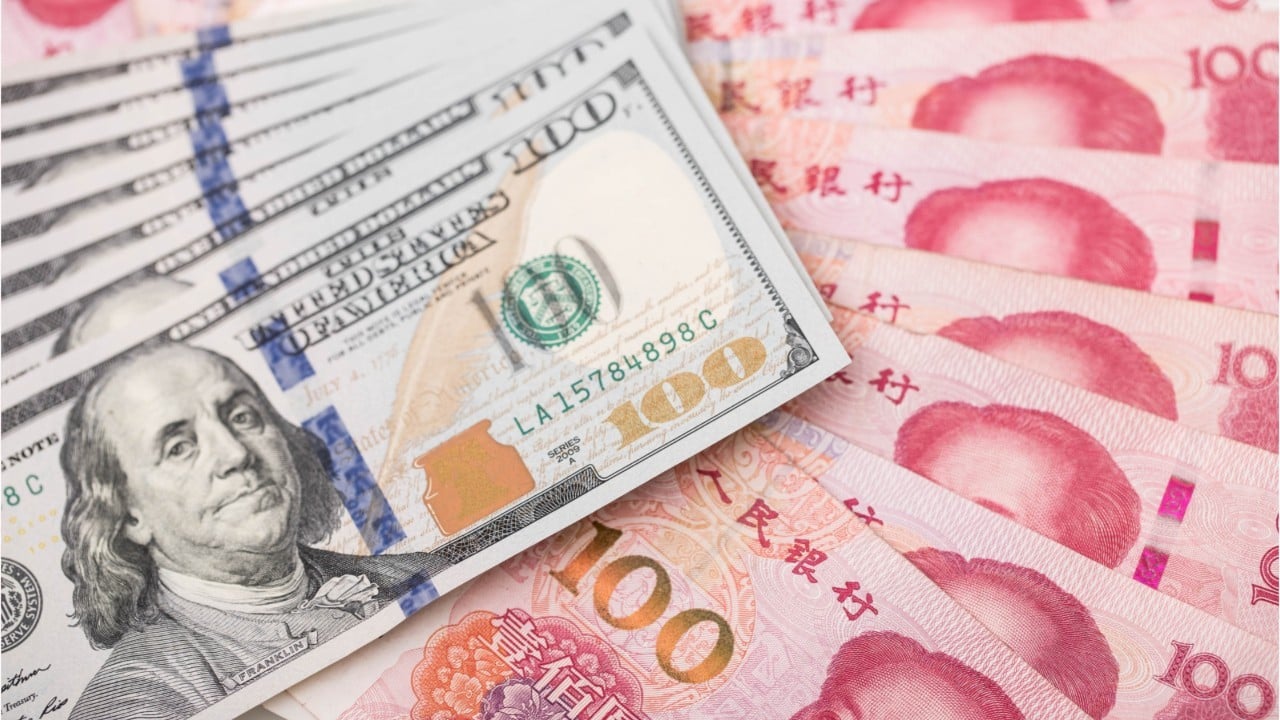
Explainer | As China’s yuan becomes more globally used, which currencies will it surpass by 2030?
- Bolstering the yuan’s internationalisation has been on Beijing’s agenda for years, and here’s why doing so remains essential in leadership’s plans
- But how will China’s political structure assist and impede the development of the world’s second-largest economy?
With China’s rapid ascent of the global economic ladder in the past several decades, Beijing has been promoting the yuan both as an alternative currency in international trade and as a reserve currency.
Why does China want to internationalise the yuan?
Cross-border financial activities will be safer for China if the yuan is used as the unit of exchange, as it will reduce exchange-rate risks and allow the country to be less reliant on foreign institutions and international payment systems.
This will also allow the world’s second-largest economy to borrow large amounts of money at lower interest rates internationally, as there will generally be higher demands from other countries for the yuan if it is used for their own trade invoicing and settlement.
What has China done to push for global use of the yuan?
The Chinese government has set up global offshore yuan markets in cities such as Hong Kong, Singapore, London, Paris and Luxembourg that are kept separate from the onshore market.
Offshore market exchange rates are left to market factors without any regulatory intervention, whereas only partial convertibility is allowed in the onshore markets.
It allows the Chinese government to “retain the option of adjusting the extent of its capital controls when the needs arise”, Lai said.
How much progress has been made to internationalise the yuan?
A number of indicators, such as the Standard Chartered’s Renminbi Globalisation Index (RGI), point to progress being made, especially in recent years. The renminbi is the official name of China’s currency, while the yuan is the unit of currency.
The RGI, which launched in November 2012, measures the “overall growth in offshore renminbi ‘usage’ by counting the currency’s use as a store of wealth, a trade-settlement currency and a means of capital raising, as well as its [foreign exchange] market trading volume”, according to Standard Chartered.
The index, which has figures dating back to December 2010, continued to rise until March 2015, after which the index declined for several months due to “China’s tightening of capital controls after its devaluation of the yuan”.
The latest RGI value, from July, is the highest ever at 3,032 – or about 30 times what the index was in December 2010.
What’s the difference between China’s yuan and renminbi?
The pace of the yuan’s internationalisation has picked up in recent years as well, according to a report from Standard Chartered (SC) in February.
“For the whole of 2021, SC’s RGI improved 18.1 per cent versus 10.5 per cent in 2020 and 1.6 per cent in 2019,” the report said.
“All of this confirms that renminbi internationalisation, much like the performance of the currency itself, has not been fazed by global inflation and rate-hike worries, nor the prior slowdown in China growth.”
According to an October report from international financial messaging service Swift, the yuan remained the fifth-most-used currency for global payments by value in September, having increased by 6.24 per cent since August.
Could China’s new plan push yuan to become world’s ‘currency of choice’ by 2050?
How is the international community responding to Beijing’s agenda?
SDRs are the IMF’s international reserve asset, which was created to supplement member countries’ official reserves. The SDR previously consisted of the US dollar, euro, Japanese yen and British pound.
Siddharth Tiwari, who was then the director of the IMF’s Strategy, Policy and Review Department, said in 2016 that the addition of yuan to the SDR recognised “the progress made in reforms to China’s monetary, foreign exchange, and financial systems and acknowledge[d] the advances made in liberalising, integrating, and improving the infrastructure of its financial markets”.
What does the future look like for the yuan’s internationalisation?
Financial institutions, such as Citigroup and Goldman Sachs, along with other analysts, predict that – by 2030 – the yuan will become the third-most-used currency in international payments and as a reserve currency.
Such outlooks see the yuan surpassing the yen and pound as a reserve currency. In the second quarter of 2022, the world’s central bank reserves predominantly consisted of 59 per cent US dollars, 20 per cent euros, 5 per cent yen, 5 per cent pounds and 3 per cent yuan.
And in terms of international payment currency rankings, the yuan would surpass the British pound. In 2021, the US dollar took up 40 per cent, the euro 36 per cent and the pound 5 per cent, with the yuan at 2.7 per cent.
However, the yuan is not expected to threaten the top two dominant international currencies, according to experts who say that financial maturity and the openness of capital accounts are more important than the size of a nation’s economy when it comes to a currency’s dominance in global use.
Capital-outflow concerns keep Beijing on guard against external shocks
China’s political structure may be another element impeding its goals, Lai added.
“[It] seems unlikely that a country without a contestable democracy, independent judiciary and a truly free press to constrain the government can secure the confidence of the world on its currency,” he said.
A multi-reserve-currency system, instead of a single currency dominating a big chunk, is more likely to happen in the future, Lai explained.
Kelvin Lau from Standard Chartered, who played a big part in devising the RGI, agreed that China will eventually become the third-most-dominant international currency.
“It is possible, assuming that China’s economic influence continues to grow globally, and that it remains committed to further opening up its capital accounts and growing the offshore renminbi centres,” Lau said.



